
I’ve just spent five days at West Dean College in Sussex, on a short course called “Sketchbooks into paintings”, with artist Katie Sollohub as tutor. In outline, we spent two days developing sketchbook material, including work outside in the West Dean gardens, and then three days developing paintings in the studio. The emphasis was not simply to develop observational drawings and then make paintings of that scene, but to create images which were also based on memory and sensory experience. We aimed to find a personal response to the place, and discover ways of creating a visual expression of our experience.
On the first evening, we started with random mark making with ink on a one-page sheet, cut and folded to create a miniature sketchbook – mine is shown above. Next day, we had guided walks in the gardens, where we could choose to make small sketches. We were each given a concertina sketchbook in which to work. These we also filled with random marks in various media including coloured inks. Below are some of the sketchbooks spread out:

There were several exercises to draw into these sketchbooks, both out of doors and in the studio. Here are a selection of spreads from mine:



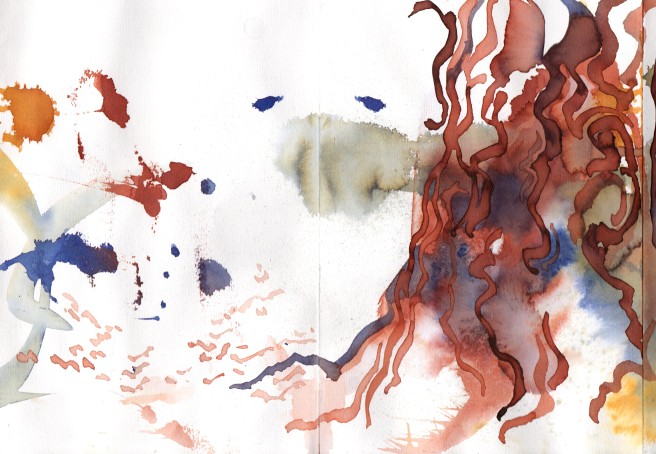


We had drawing exercises where we were asked to make quick sketches of line, shape, texture, pattern and sound in the landscape. There were meditations, including one where we did a series of drawings of memories, with closed eyes. Here is one of mine:
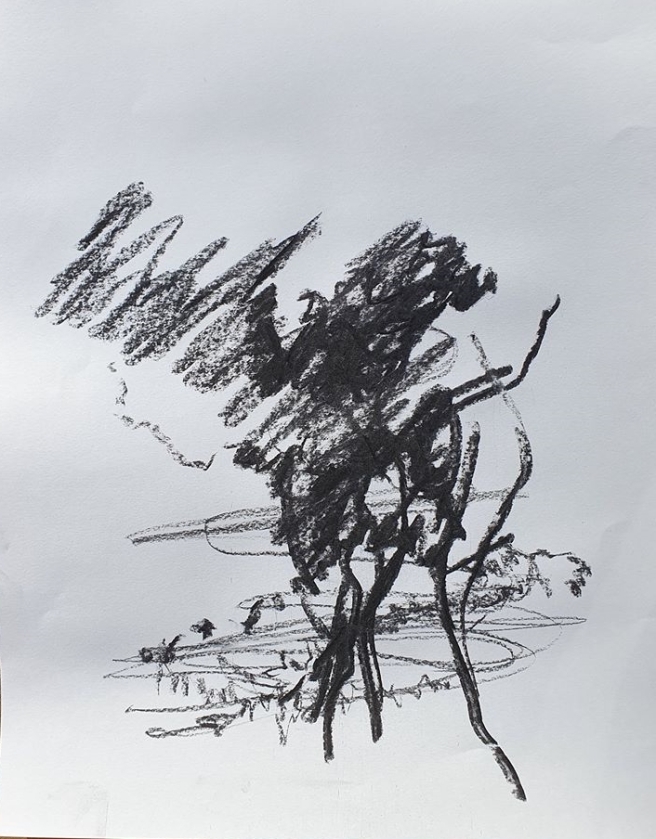
My studio paintings were done in acrylics. The tutor had planned that we should work in acrylic or oil paint, as the course had a big emphasis on altering and developing the work, obliterating sections and painting over them; watercolour is really too transparent to work in this way. My studio painting, below, is based on the charcoal drawing:

We did a series of studio exercises to help us develop paintings, using the material we had gathered, and our response to the place. These were intended to develop a more expressive and innovative response, which was based on more than simple observation. For the one shown below, we each carried out six quick studies based on one of our paintings, following the directions of the tutor. For example: simple mark making, using the image but changing the colour, moving or removing one element, working at a different scale, and so on.

Here, below, are the other two more finished paintings I did, although I think the bottom one needs further work:
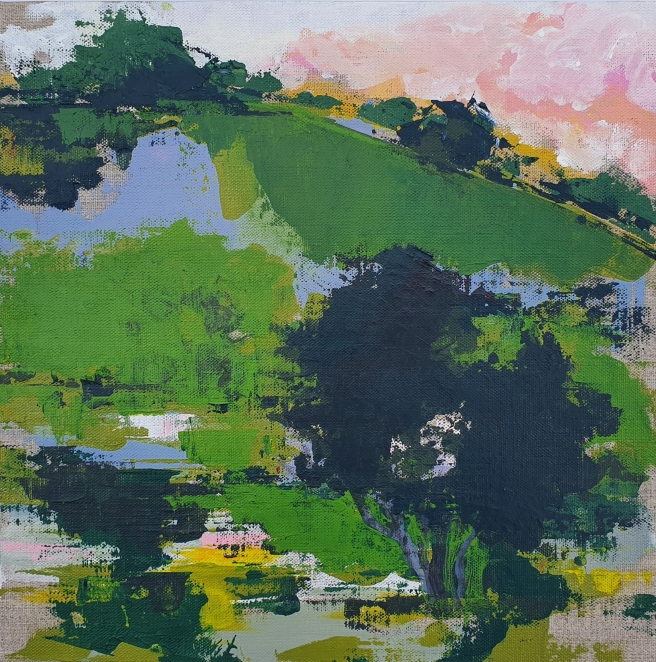
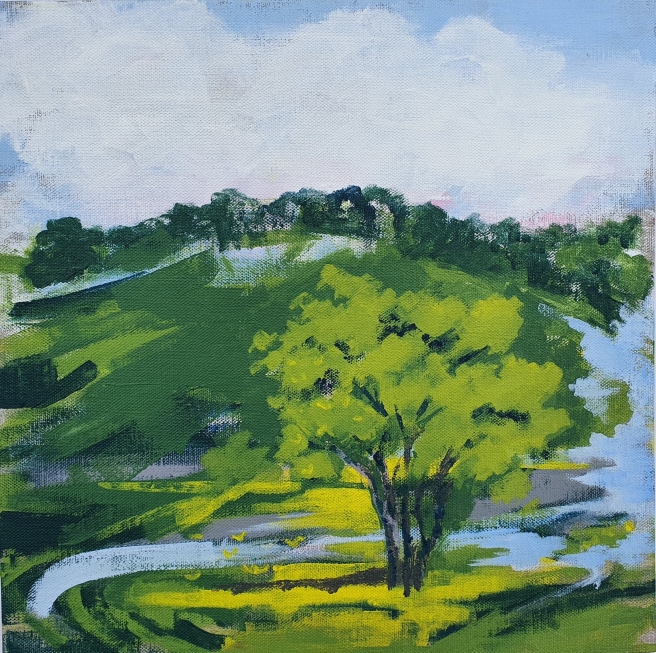
Note added later: I have worked on the painting above, and here is the new version:

I have so much to think about from this course. Most of it relates to creating studio paintings rather than working entirely on location, which is what I tend to focus on. For example:
- developing works in series in order to explore visual ideas
- doing very quick studies to help find ways forward with a painting
- thinking about expression which goes beyond straightforward observation, such as how to use colour, composition, or style of marks and brushstrokes to express emotions and memories.
None of these ideas are new, it is putting them into practice which is harder. Interesting problems.










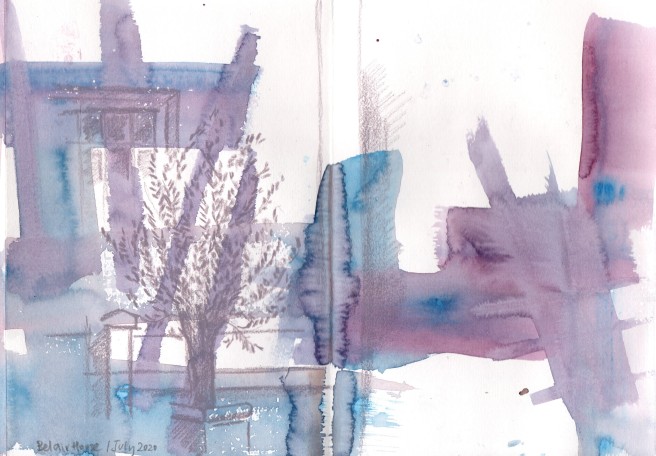
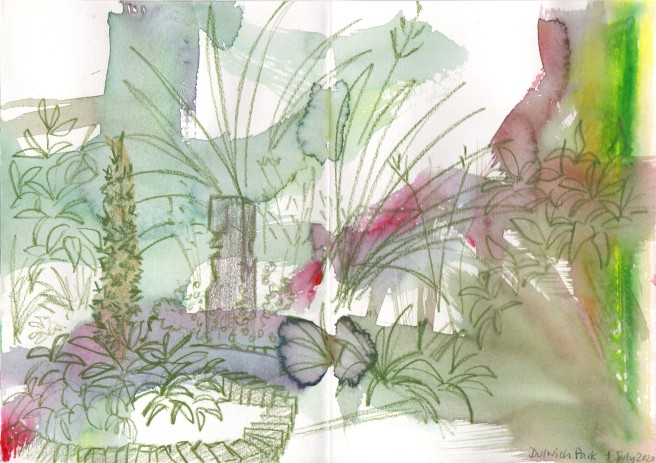
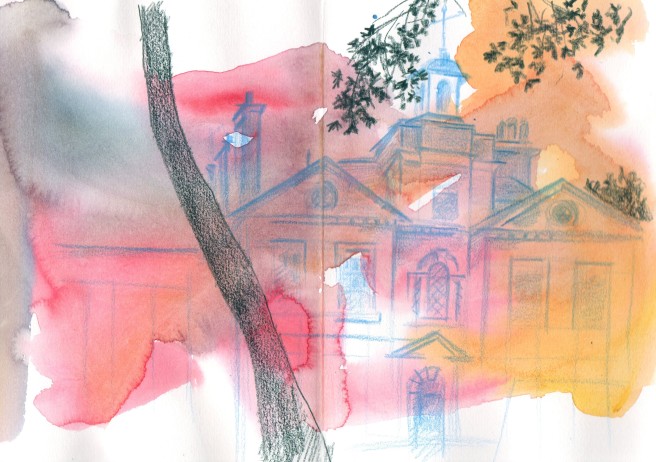

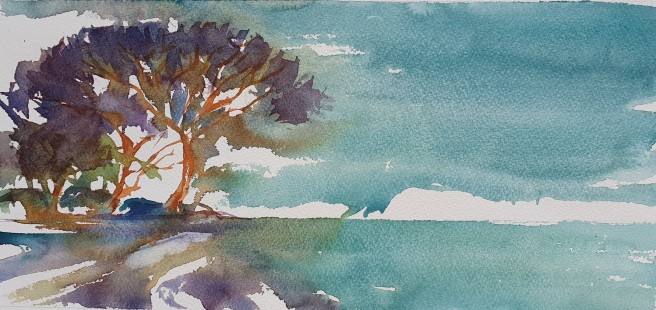


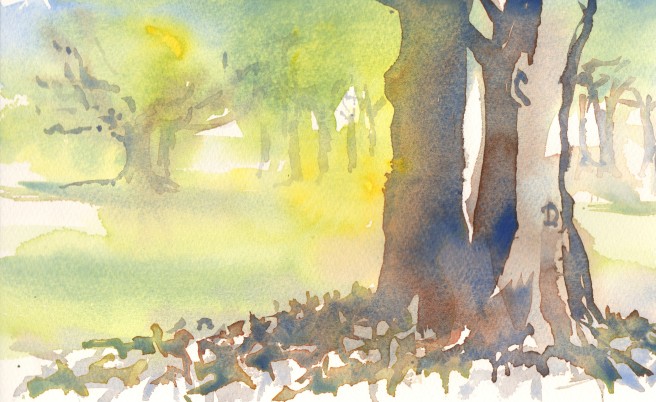



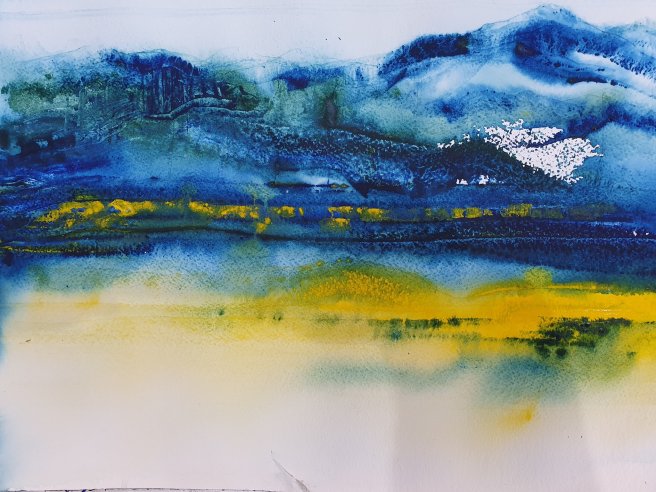
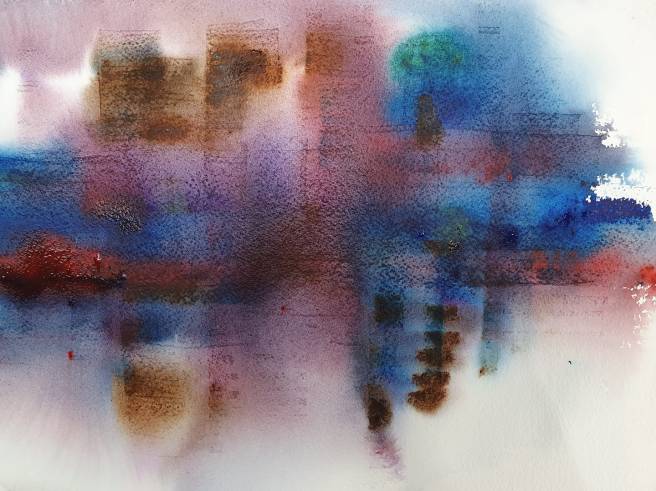
 Today I have done two more, which are below. I don’t think either of these are particularly good, but attempting to take a more free approach means trying things which may not work, and learning from that. The second one, below, in particular, is bigger than I usually work, and I think that shows, especially the rather ’empty’ centre. I am also trying to resist adding more controlled detail at a later stage.
Today I have done two more, which are below. I don’t think either of these are particularly good, but attempting to take a more free approach means trying things which may not work, and learning from that. The second one, below, in particular, is bigger than I usually work, and I think that shows, especially the rather ’empty’ centre. I am also trying to resist adding more controlled detail at a later stage.














